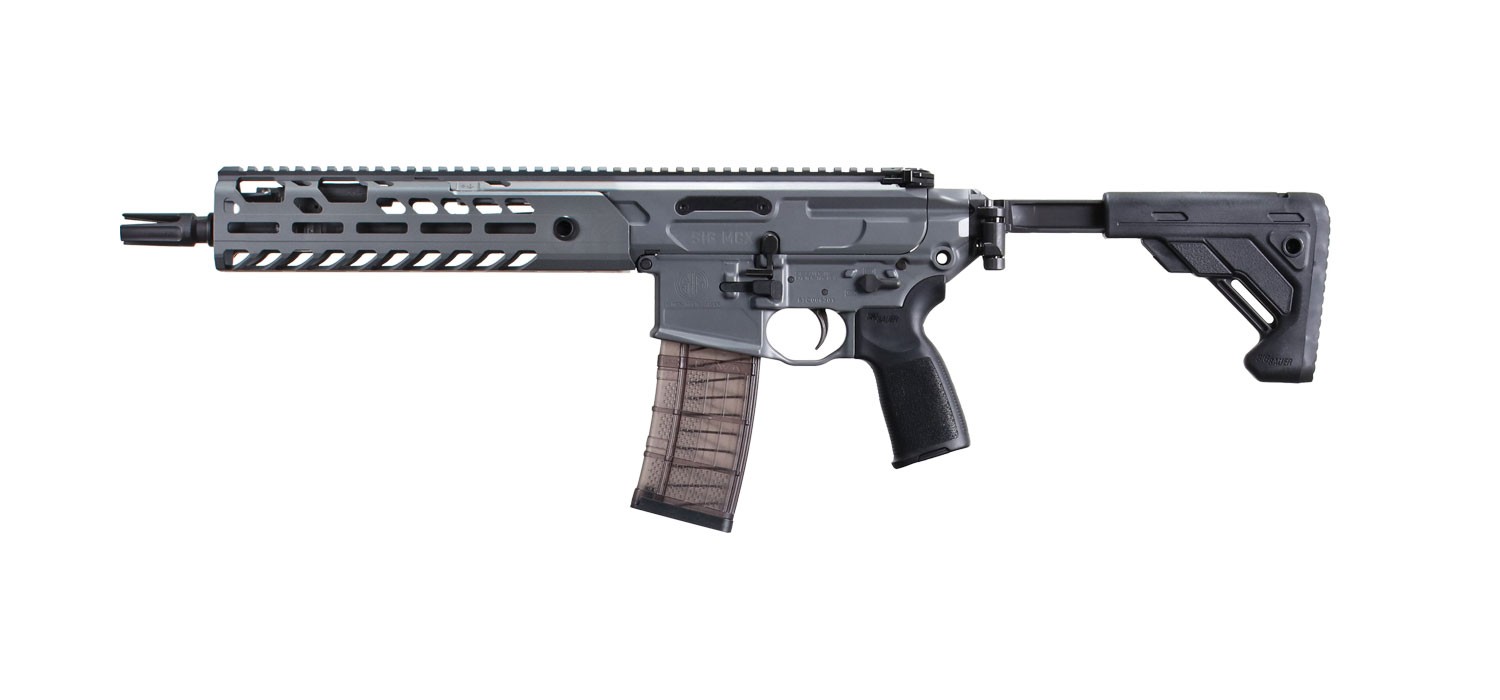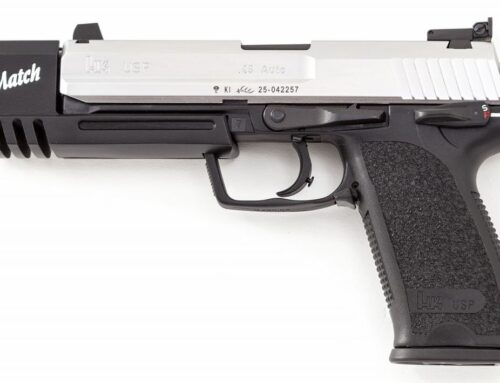Once in a while something new will come to the firearms world which leaves me feeling puzzled. The Sig MCX lineup isn’t all that new anymore, it’s held strong within the market and I’ve heard many good things about them but I still had a lot of unanswered questions. Having recently gotten some hands-on time with a suppressed short-barreled rifle in .300 Blackout I decided to try and figure out what’s what.
At first glance the MCX line looks just like an AR-15 without the buffer tube. The usual bolt and magazine releases are in the same locations with the mag release being ambidextrous, the ambi safety selector has a ninety degree throw, the upper and lower receivers are held together with two pins, a T charging handle rides up top, a hinged dust cover and forward assist join the brass deflector on the right, and it takes AR-15 grips and STANAG mags. If not for the stock situation it would be very easy to mistake it for another AR.
The MCX lineup has several models including the Virtus Patrol rifle and pistol, the Canebrake pistol, and the super extra short Rattler. Finishes seem to vary by model and caliber between black, grey, and flat dark earth.
The aluminum handguard features M-Lok at the 3, 6, and 9 o’clock positions with an interrupted Picatinny rail up top. The back of the lower receiver has another small Picatinny section positioned vertically to accept a variety of MCX style stocks and arm braces, all of which can be completely removed. The standard MCX stock folds to the left and has a five position length of pull which will be very familiar to AR users. There’s also a QD socket on either side above the rear grip and set near the back of the handguard.
Under the hood is where the MCX gets more interesting. Gone is the AR gas impingement system. There is no buffer tube, weight or spring. The MCX’s internals are derived from the lesser known AR-180 where the bolt rides on a pair of guide rods and is powered by a gas piston setup. The handguard can be easily removed altogether which provides access to a series of bolts which allow the user to swap out barrel and piston units should the need arise.
Here is where my confusion begins. If the entire purpose of this design was to have an AR-15 with a folding stock then Sig has certainly succeeded but I have to wonder why they didn’t choose to create a completely new design?
Confusion aside, hands-on contact with the MCX does leave a solid first impression. The machining and finish are flawless. The bolt operation is buttery smooth. One detail which surprised me in a good way is that every edge seemed to have been nicely radiused right down to the individual notches on the Picatinny rails. One particularly small but nice touch comes at the charging handle lockup where a pair of steel pins have been inserted into the upper receiver. You won’t get the typical AR receiver wear here. The metalwork on the MCX is very smooth all around, Sig took the time to get this part right.
While I’ve never been a fan of forward assists the MCX splits the difference for me. The AR-style button assist remains but it’s been tucked closer and further toward the ejection port to give you better access to the charging handle. If AR-15’s are going to continue having the forward assist then I feel like they should all be designed more like the MCX.
Out on the range I tried the .300 Blackout with and without the suppressor. Without having a can up front I found that the balance was actually pretty good with a 9 inch barrel. With the gas piston setup and less mass in the stock I usually find these rifles to be quite front heavy but the shorter barrel helped.
My experiences with .300 Blackout are more limited but it is a more stout cartridge with recoil similar to a 7.62×39. Gas piston firearms also have more of a recoil impulse due to having more reciprocating mass. As expected the MCX rocked me more than a 5.56/.223 but it wasn’t an unpleasant experience. Rather, it felt kind of satisfying.
The trigger was another surprise. With so much of the rifle being smoothed out and refined I was expecting an equally smooth trigger pull but in my test example this wasn’t the case. What I felt was more of a mil-spec trigger which had some take-up, a rather mushy feeling break and a gritty feeling reset. Aftermarket triggers do exist including the Geissele “Super MCX SSA.”
While the shooting experience was fun I did have some concerns. To start, we have to go back to the T charging handle. I have never liked this design and it baffles me why any manufacturer would choose to keep using it on anything which isn’t an AR. The MCX still has that nice slick finish on their charging handle but between the finish and a sharply angled back side I found the handle incredibly difficult to hang onto. If you’re doing anything other than hooking two fingers across the top and pulling straight back then you’re going to run into issues. Radian Raptor aftermarket handles are available. I would consider it a necessary upgrade.
Another issue with T charging handles is that they vent a lot of gas straight back into the shooter’s face. Unsuppressed this wasn’t an issue but as soon as a can was introduced I could at best get three shots off in a well ventilated indoor range before having to stop. Changing the gas setting didn’t do much to help. While not a unique ailment to the MCX it does lend to my puzzlement as to why this design had been chosen. Familiarity of operation for most users, perhaps?
This leads me back to my initial confusion. The Sig MCX is “like an AR-15” but not. It’s like a mint M&M, the same on the outside but completely different beyond the shell. Sig put a lot of work into the MCX but I still cannot understand why they went through so much effort to make it look and feel like another AR-15. The market is already so saturated by these patterns of rifles and pistols, why not make something which would stand out or fill a different niche? Sig themselves already offer several AR pattern rifles including the usual direct gas impingement and a piston operation setup.
It remains a question without an answer, a feeling that Sig may have cut themselves short this time around. Then again, I’m also one of those individuals who would have loved to see the classic 550 series of rifles make a comeback. The MCX series is a very good platform but in my eyes it falls short of being something truly special.








